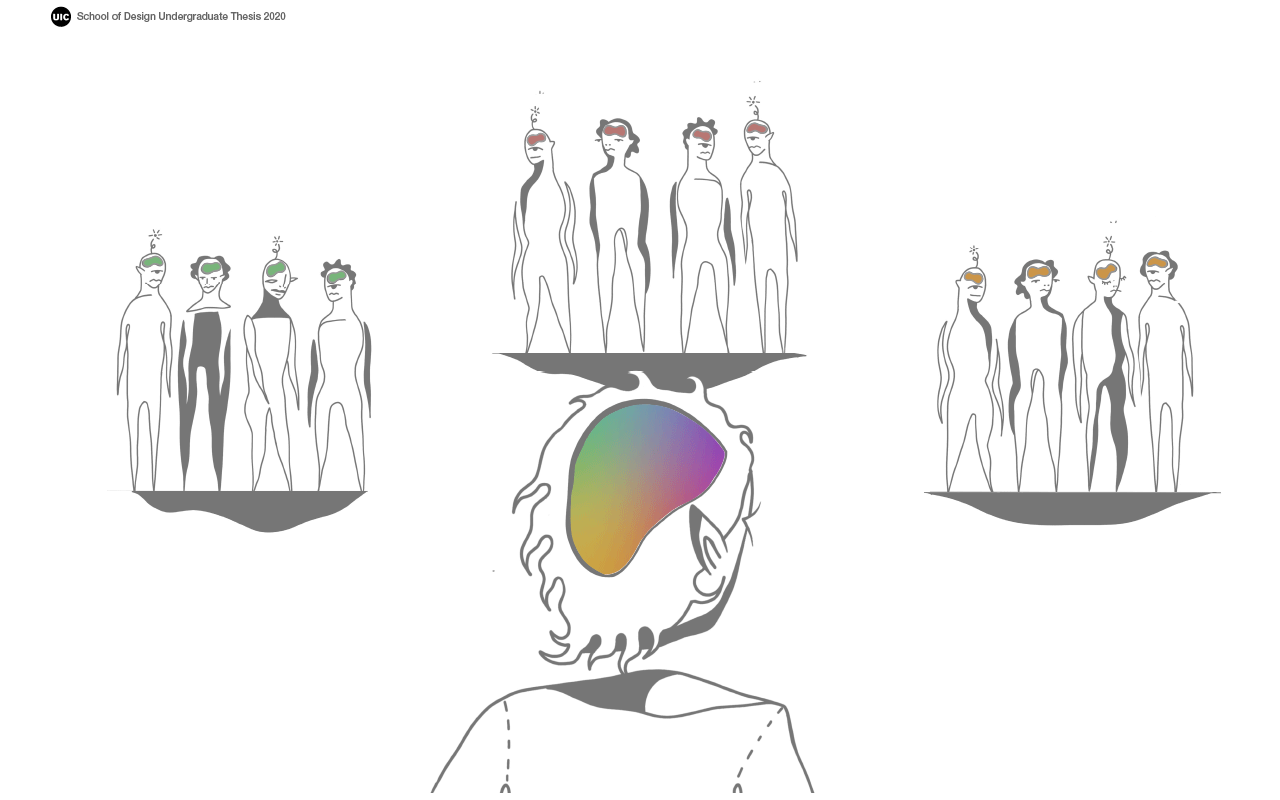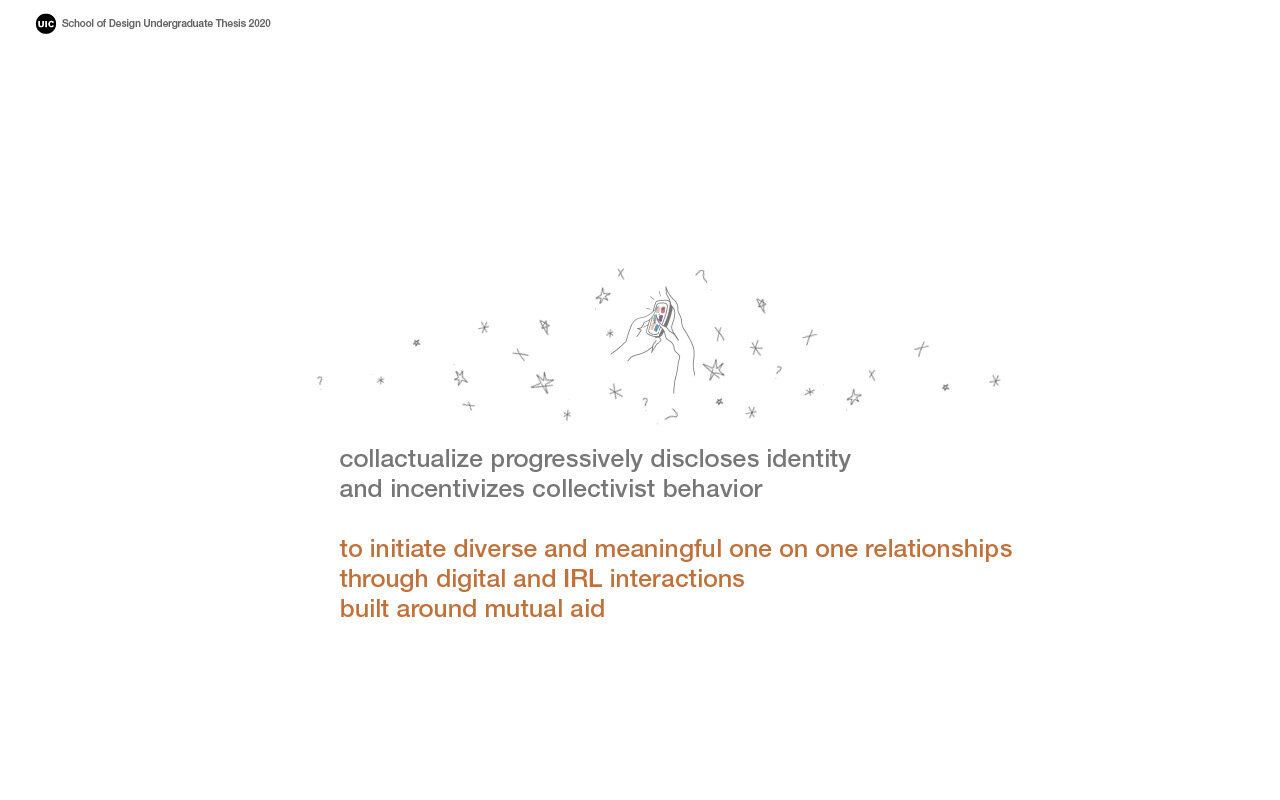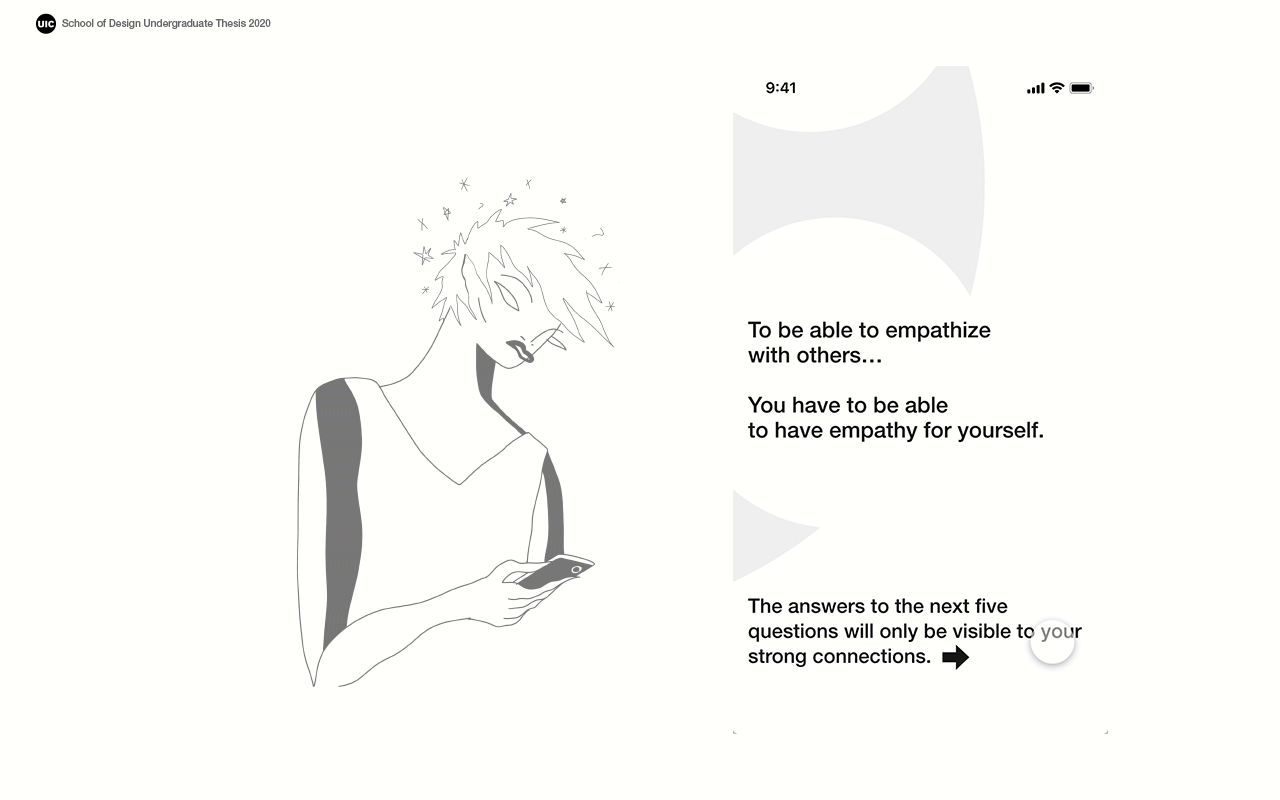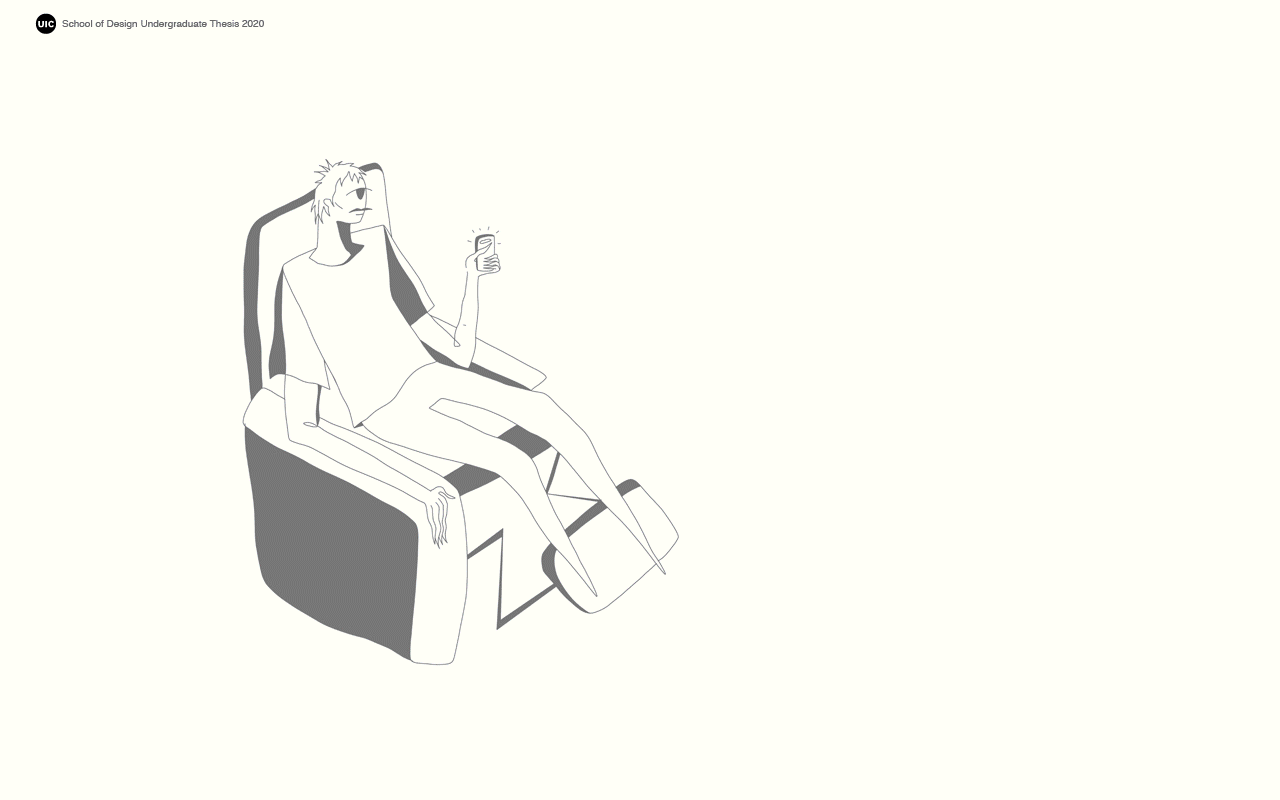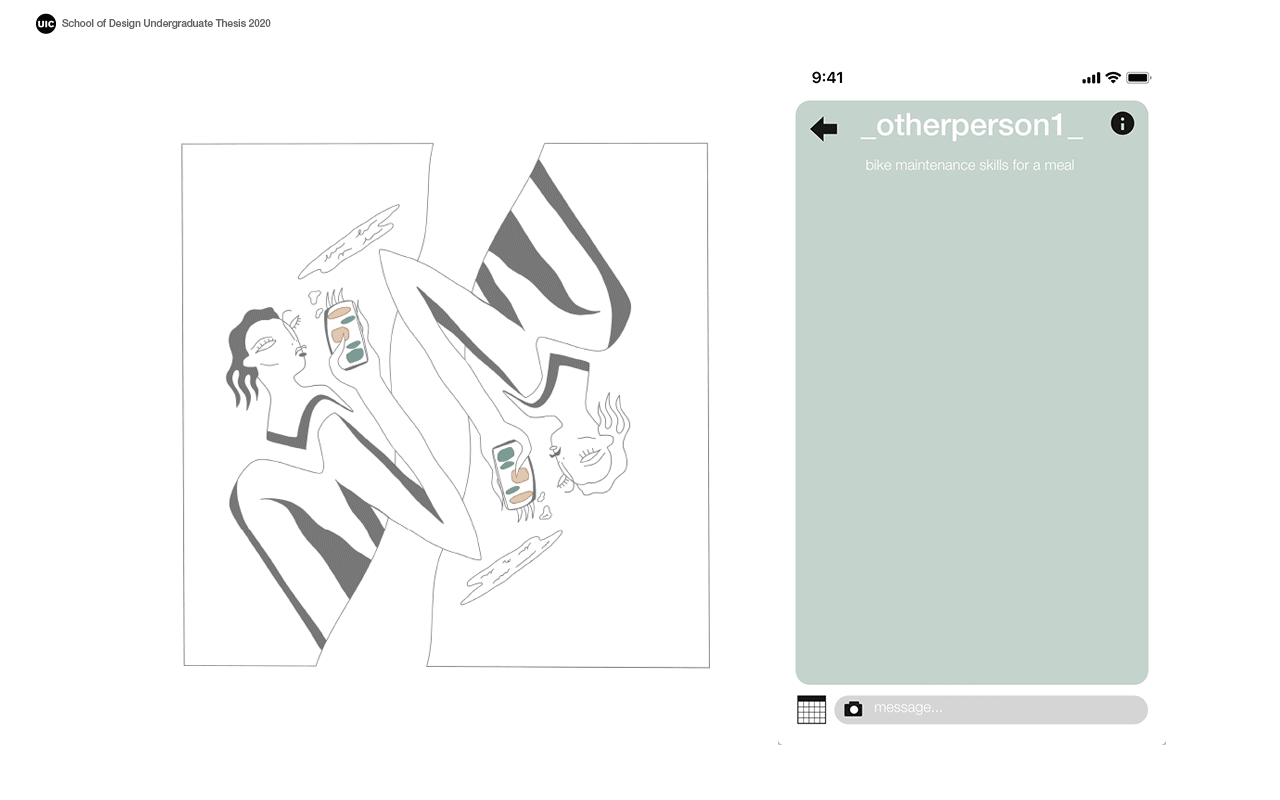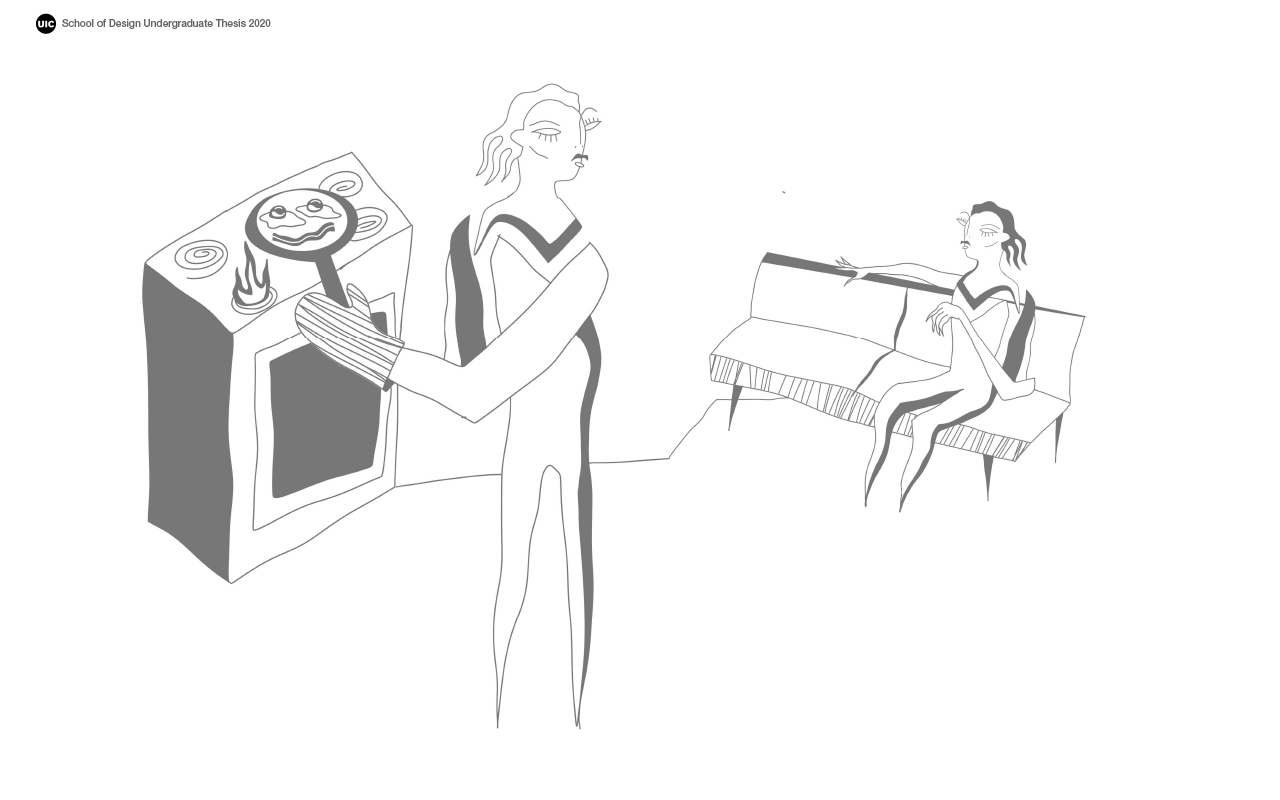Eleanor Grace Ravenwhite
Collactualize
A blend of critical and human centered design, Collactualize is a new form of social media that works against self segregation occurring through implicit bias. The intention is to bridge siloed knowledge, assets, resources, and experiences in an inclusive and equitable way. The app uses progressive disclosure of identity and incentivizes collectivist behavior in order to initiate diverse and meaningful one on one relationships through digital and IRL interactions built around mutual aid.
Unconscious bias plays a large role in the choices we make about who to spend time with. For example the cliche moment when you decide who to sit with at lunch.
In the moment that we make those decisions, we make assumptions. We look at the people at these tables and we see what they have in common with each other, and we assume that if that is something we don’t identify with that it will be difficult to relate to them on any level. We flatten their identity to only what we can see.
The reality, of course, is that you have many aspects of your identity, some of which may even be conflicting, and so does everyone else.
When we make that assumption we often lose the opportunity to make friendship with people we actually do have things in common with. Additionally we lose the chance to practice empathy for those with different experiences.
Then when we add in the reality that each person has different privileges lifting them up. These are granted to them by various intersecting structures of oppression. Taking in to account that one of the most common driving forces of community is shared circumstances (represented by the circles separating each group) and we begin to see how an assumption made again and again over time can begin to further entrench existing inequities. This is commonly called opportunity hoarding. We all want to make sure our friends and loved ones are ok.
We help each other out when needed in most any way we can. But when you and everyone in your circle has fewer opportunities or resources to draw from, it limits how much you can help each other. If you and the people in your circle have an abundance of opportunities and resources, you are still unlikely to offer them to people you are not close to, most often because you don’t even know they need it or don’t understand their situation because you haven’t given yourself a chance to empathize with them.
To begin to understand how I could address this issue I wanted to look at the ways existing types of communities tend to operate. Specifically I wanted to understand how inclusive or exclusive they tend to be, as well as whether they reward individualism or collectivism.
The five shown here are widely accepted general categories, interest (like faith or hobby), action (politics), place (neighborhood or nation), practice (profession or career) and circumstance (race/ethnicity, age, gender or sexual orientation).
All of these communities likely function in multiple ways either physical or digital, but in today’s world social media is one of the most common platforms that enables community building, and each app has its own unique culture.
Social media has many advantages because it is a digital technology. They are all relatively accessible and very convenient, they can offer users varying degrees on anonymity, but they all also struggle to encourage empathetic interactions as apposed to sympathetic ones.
Collectivism is a mindset. It is the opposition to individualism, which is the prevailing mindset in popular culture today.
Many people believe that independence and interdependence are separate states of being and that one is better than the other. I would argue, based on the interviews I conducted, that the reality is that we are all experiencing each of them simultaneously to differing degrees, despite what we perceive. Take for example, a superhero. They are in many ways the idealized symbol of independence, so extremely capable that they could even save the world by themselves. Think about it a little bit longer and you realize that for starters they probably didn’t do it alone. They almost definitely had help of some sort from someone, and they might not have even cared enough to save the world if they didn’t have people to do it for.
Additionally I’d argue that both interdependence and independence are valuable for different reasons. And that focusing to intensely on either one is what is harmful.
Studies at Stanford explain that some of the ways individualism can manifest negatively are shame in asking for help and anxiety about distinguishing yourself from others. In a survey I discovered that almost 90% of respondents experience at least one of those, and that it has a significant negative impact on their mental health.
One other way the excessive focus on individualism can be harmful is that it causes a hierarchy in the value of participants in an interaction. It plays up the role of the person who is giving, while often dehumanizing the person being helped, and undervaluing the people who assisted along the way.
If Collactualize can counter individualism, which is what currently guides the majority of peoples behavior, by incentivizing more collectivist behavior, then we can open up a space for relationship building where everyones’ contributions are valuable.
First things first: Make sure the user knows that this is going to be different from other experiences from the very beginning.
Community guidelines are kept as simple and short as possible, but they can’t accept terms until audio file finishes playing.
When creating their profile users are prompted to answer different kinds of strategic questions that encourage them to reflect on their own identity and understand and empathize with their own complexity.
They are also pushed to think out of the box with what they can contribute.
The main way Collactualize avoids addictive behaviors is by not centering shared content, and only drawing the user’s attention at deliberate intervals, which can be edited depending on the user’s availability.
So at the users desired frequency (at most once a day), and likely at the end of their work day, they will receive a collection of six people who they could potentially exchange with. This low number places greater significance on each opportunity.
The six are randomly selected from those passed within 100 feet throughout the time elapsed since last six. The algorithm would favor users with fewest commonalities to make it more likely that you learn something new.
The high level of anonymity at this stage limits bias. The inclusion of a status encourages empathy. A users stats are also meant to highlight the things that matter more in this context, like how long you’ve been using the app, and if you’ve reconciled any conflicts you’ve had. Lastly, as a safety feature all conversations are public.
The only part of a conversation that is hidden from public view is the time, place, and location set for an exchange.
People are able to send photos of the things that they are offering to exchange, but they will be verified before they can be sent.
Once they have made plans, they will be able to see each others entire list of offerings. It enables more in depth conversations during a meet up.
People can make plans for whatever kind of meet up or exchange they would like. They are encouraged to meet in a public place at first, and identify each other by articles of clothing. Because the app is location enabled, it can also suggest a decent halfway point without forcing people to disclose their neighborhood.
After having met up with someone, users will now also be able to see the other person's entire profile. Additionally, if you feel optimistic about continuing to develop a relationship with them, you can mark them as a strong connection.
Users will also be invited to shortly reflect on the exchange which will be shared with the other person and archived with all other reflections for your own memories. You can also post it to be viewed by other strong connections.




